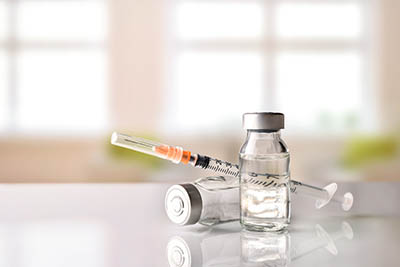
Diabetes mellitus is a problem more and more people suffer from nowadays. There are two main types of diabetes – type 1 (when people’s bodies cannot produce enough insulin on their own) and type 2 (when the body doesn’t respond well to the insulin). Depending on the type, different versions of insulin may be required. But what is insulin? How does it work? What do we need to know about it? All of those are excellent questions, and we are willing to discuss them together. Read and learn.
What is insulin?
Insulin – a special hormone produced naturally by the pancreas. Its main purpose is to control glucose levels in the blood, thus keeping blood sugar levels on the normal level. With its help, glucose can be stored in such body tissues as the liver, muscles, and fat, as well as used whenever the body needs more energy for normal functioning. If the amount of sugar in the bloodstream is not controlled properly, it may lead to diabetic ketoacidosis, diabetic coma, and even potentially fatal consequences.
Human insulin is mainly produced by the pancreas when the person eats, and, as followed, the blood glucose level in them rises. To control it, a person requires a proper amount of regular insulin. However, those with diabetes should be careful to control it properly, so the sugar doesn’t go too high or drops too low. It can be done with a special device called a glucometer; some people learn to define it depending on the way they feel (in case they live with this issue for a long time). Insulin analogs should be prescribed to those with insulin resistance; it can only be done by a professional after all needed tests and a consultation.
How many types of insulin exist out there?
Insulin injections are different depending on how long they can keep their effect. They may look different as well – some are clear and transparent, and some are cloudy. It is better to ask your doctor how your medication should look like. Cloudy insulin should be shaken carefully before administration so it becomes milky, without any foreign particles.
Speaking about the types, insulins can be divided into short (or rapid) acting and long-acting. And now we are going to explain the main distinctions.
Rapid-acting insulin
Rapid-acting insulins start working approximately 3 to 20 minutes after the administration and keep their effect for about one to three hours. It is mainly used immediately after a meal or right before it and can be called a mealtime or prandial insulin. Such medications as Fiasp (insulin aspart), Humalog (insulin lispro), Apidra (insulin glulisine) belong to this category.
Short-acting insulin
This type starts improving blood glucose levels about 30 minutes after the injection. That is why it is recommended to use it 30 minutes after you eat. Those reach their maximum effect in 2-5 hours and keep working up to 6-8 hours in the body. Humulin R and Novolin R are products that are prescribed the most often by doctors.
Intermediate-acting insulin
These can also be called basal or background insulins; they are naturally cloudy, so a careful mix of insulin vials is required before the injection itself. It starts acting in an hour to an hour and a half, gets to its peak in 4 to 12 hours, and works for 18 – 24 hours (so, almost a whole day). Such brands as Humulin NPH and Protaphane are the most famous for this type; they both belong to human isophane insulin.
Mixed insulin
This one is a combination of rapid-acting (or short-acting) insulin and an intermediate-acting one. It comes in two variations – a short one together with intermediate-acting insulins (NovoMix 30, Humalog Mix 25, etc.), and rapid-acting with an intermediate one (Humulin 30/70, Mixtard 30/70, etc.).
Long-acting insulin
Long-acting insulins for diabetes treatment in people work much slower than all of those mentioned above. The results are more steady and support a person throughout the day. The injection of regular human insulin should be administered once per day, mainly in the morning. Some patients can be prescribed to have two injections per day (it can be done only by a health care provider with a history of your illnesses). Such medications as Lantus and Basaglar (insulin glargine), Levemir (detemir insulin), etc., belong to this category.
Except for the different types of insulin mentioned above, there are also other medications for people with diabetes mellitus. For example, supplements that are used to help lose weight gained because of diabetes (Saxenda) or injections that help with various eye problems (Lucentis).
Insulin devices variations
We cleared everything out about types of medications for insulin therapy. Now, let’s talk about the ways of administration that are the most commonly used in everyday life:
- Syringes. Those usually include 30, 30, or 100 units of the remedy. The length of the needles varies from 6 to 8 mm. A proper dose should be calculated by a doctor. Subcutaneously injected insulin cannot be stored inside the syringe after it was already used once; they are a single-use only;
- Pens. There are two types of these devices – disposable and reusable. They already include the cartridge with a human (or animal) insulin inside. If a patient chose a reusable pen, they can just put a new cartridge as soon as the old one was completely used, out of the fridge for more than a month, or expired. The doctor or the nurse should show you the right technique, as well as insulin injection sites;
- Insulin pump. This small device is usually worn outside the body and is programmed to send insulin doses into the fatty tissue through thin plastic tubes. Those are inserted under the skin and should be properly changed every two to three days. Insulin pump therapy implies small doses of the needed medications are delivered into the body between meals in order to keep blood sugar levels properly. It cannot be used by anyone, so a consultation with a medical professional is required first.
The bottom line
Insulin medications are actually lifesavers for those who have to live with diabetes on a daily basis. It is important to understand all the peculiarities and how to deal with this problem. We hope that, with the help of this article, you now understand a little bit more about insulin and its special features. Stay safe and take care.
Story by Aleks Souschuk










